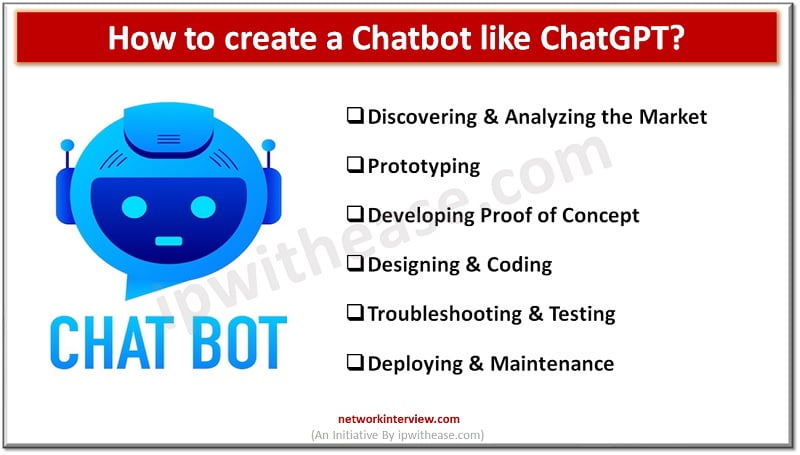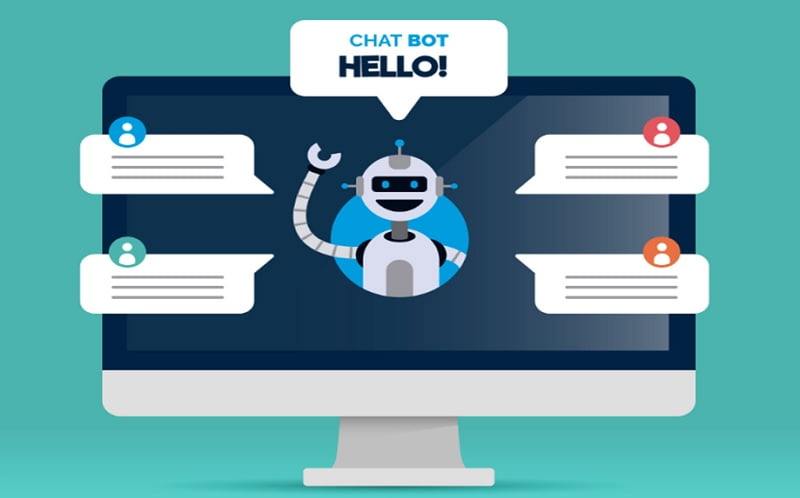
How to create a chatbot like ChatGPT with minimum limitations & maximum capabilities?
What was once restricted to academic discourses and testing facilities has evolved into things that are more accessible to the general public. This surge of Artificial Intelligence has penetrated the human realm. Artificial intelligence (AI) chatbots are at the forefront of this revolution because of their capacity to provide instructive help and carry on simultaneous discussions. It’s no secret that certain chatbots have gone viral, and their usefulness has grown far beyond basic customer assistance. This has prompted businesses all over the world to start creating ChatGPT-like bot. In this article, we will discuss what a chatbot is and how to build ChatGPT-like bot.
ChatGPT: What is it, and How is it changing the world?
OpenAI’s newest AI-powered chatbot, ChatGPT, is designed to facilitate conversation between humans. Generative Pre-trained Transformer (GPT) refers to a type of artificial intelligence (AI) engine that can generate new material by applying the knowledge it acquired during training.
The chatbot is built upon a machine learning framework that has been trained on more than 45 terabytes of text data to provide the most likely response to a question or prompt. This made it possible for ChatGPT to interpret text data for patterns and combinations that would prompt useful responses.
Is creating a ChatGPT-based chatbot profitable enough
A chatbot like ChatGPT can help you save money on overhead or bring in new members, depending on your business’s needs. There is little doubt about the value for money:
- Instant scalability: Chatbots can be programmed to be available 24 hours a day, seven days a week, to assist customers whenever they need it.
- 24/7 Availability: Businesses can save money thanks to chatbots because they can handle a high volume of queries from customers at once.
- Increased Efficiency: Chatbots can provide instant, precise responses to consumer inquiries, allowing human agents to focus on higher-level issues.
We hope that this section will give you insight and motivate you to learn how to create a chatbot like ChatGPT (if you want deeper insights, check Topflight research to read about this topic in more detail).
Estimated costs of developing ChatGPT-like chatbot
The first step in any computational process is gathering relevant private and publicly available data. However, gathering information takes time and money. As an enterprise, you should arrange and organize the large availability of unstructured data to extend your line of business. The already high price of obtaining proprietary data sources is an additional drawback.
Aside from data collection, data storage is an essential component of any computing system. The majority of companies that specialize in creating chatbots rely on cloud services for data storage, typically AWS, Azure, or Google Cloud. The ChatGPT app’s user interface is hosted on Microsoft Azure’s cloud. Using these cloud-based services can result in a hefty charge. Also, the history of ChatGPT’s development began in 2018 when GPT was first offered.
So, it’s reasonable to assume that developing a similar artificial intelligence chatbot like ChatGPT could take several months. When all these considerations are taken into account, the cost of creating an artificial intelligence chatbot like ChatGPT is estimated to be around $90,000-$450,000.
How to build ChatGPT-like bot: Step-by-Step Guide
You may be wondering how to create a ChatGPT-like bot. Well, in order to make your own ChatGPT, we must first go through a series of steps. Let’s discuss each step in detail:
Discovering and Analyzing the Market
Market research and analysis are the starting point for developing a bot with ChatGPT-like features. Finding your niche requires knowing who you’re selling to, what they value, and how your competitors stack up. Using this data, one can better comprehend what skills and features your bot has to offer to appeal to your intended audience and set itself apart from the competitors.
Towards Prototyping
You can begin developing a prototype of your ChatGPT-like once you have a solid understanding of the market. This necessitates the development of the bot’s basic functionality. You can put your ideas to the test and gather feedback from potential customers by creating a prototype.
Developing Proof of Concept
The next step to develop ChatGPT-like chatbot involves creating a prototype to build a proof of concept. This involves adjustments to the prototype and adding new features and functionality based on input from potential consumers. At this point, you’ll need to show that your ChatGPT clone bot can succeed where others have failed.
Designing & Coding
You can begin planning and developing your ChatGPT clone once you have a working proof of concept. Building a bot requires designing its user interface, developing its features and capabilities, and integrating it with existing infrastructure.
Troubleshooting & Testing
You should perform a lot of testing to find and fix any problems with your ChatGPT-like bot after you’ve designed and programmed it. This includes both functional testing, to make sure the bot does what it’s supposed to, and user testing to get real-world input from people who might use the bot.
Deploying & Maintenance
When your ChatGPT-like bot has undergone extensive testing and is ready for deployment, you can introduce it to your intended users. If you want your bot to keep up with the competition once it’s been released to users, it needs to undergo frequent maintenance and updates.
Final Verdict
You can make a powerful and user-friendly ChatGPT-like bot that caters to the needs of your target audience by following the steps outlined in this blog, such as conducting market research and analysis, prototyping, developing a proof of concept, designing and coding, troubleshooting, and testing, and deploying and maintaining your bot. You can make a powerful and simple-to-operate chatbot with some planning and effort. We hope this guide will clear your confusion about how to build ChatGPT-like bot.
Continue Reading:
Artificial Intelligence vs Machine Learning
Automation vs Artificial Intelligence: Understand the difference




